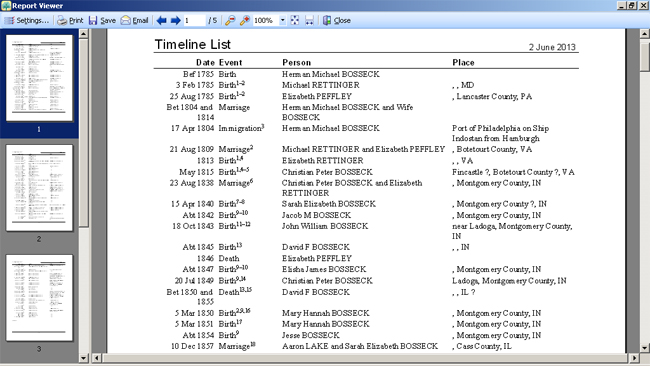Honestly, I'm not losing my mind. You too may encounter patronymic puzzles in your research. Many European countries used the first name of the father as a base for the last name of his children. Some non-European cultures also have used this sort of naming pattern.
If you see Larsdotter (Lars' daughter) or Ericsson (Eric's son) in a tree, you are looking at a patronymic name from Scandinavia. In Wales, ap is son and verch is daughter. O'Neill is a patronymic from Ireland while McFarlane is from Scotland. Anglo-Norman names may use Fitz as a prefix, meaning son. If you see, in your tree, the surnames changing in each generation, take some time to study the naming patterns of the country or region.
Today I'm rambling about Swedish patronymics.
The family of Jonas Flink, from Södermanland is a mini-study in Swedish patronymics, which were outlawed in 1901. The move away from the patronymic system began earlier, however. The military, clergy and skilled tradesmen were some of the first to take other surnames.
Imagine you are a military leader and you want to tell Eric Larsson that his uniform is a mess. You shout for Larsson and ten men respond. You can see why the military assigned new names to the soldiers and sailors. Each member of a unit was required to have a unique, brief, surname.
If you have Swedish ancestry, be sure to research surnames that don't end in son or dotter. In this case, Flink means fast or fleet of foot. If he was an older man, I would have to research his past to determine if he had served in the military. However, he was a soldier until the time of his death at the age of about 32, so there was no need to question the source of his name.
Jonas Flink lived in Stora Malm parish and was the soldier (soldat) from rote 22, Klicksta. After his death in 1807, his widow and children moved to the home of soldier 6, possibly as servants.
His children here were recorded as son (S) and daughter (D), but without a surname. Brita retained her surname of Pehrsdotter (Pehrsdr). From this church record of 1803-1807, I don't know the original surname that Jonas carried, nor do I know the surname used by his children. They might have used Flink, but that was very unlikely. The missing surnames can only be found by moving backward in time for Jonas and forward in time for each child.
Brita had a fourth child out of wedlock in 1813. This record from 1813-1818, reveals some of the information I need.
It tells us that it is the family of the widow of soldier Flink. Daughter Ulrica is oäkta, or illegitimate, without a recorded surname. Miss Brita Casja also has no surname recorded. The sons have taken the surname of Jonsson. But did the sons keep the name Jonsson throughout their lives?
As the patronymic system was falling out of favor, they may have changed their name, with the priest's approval. The choice often was taken from nature or the name of the farm where they lived. My ancestor, Pehr Eric Jonsson, changed his name to Vidberg (Widberg) between 1834 and 1840. The new name means "by the mountain".
Pehr's siblings may have taken the name Vidberg, the name Flink, some other name or may have kept the patronymic. If Claes entered the military, he might even have become a Flink.
However, Ulrica presents yet another problem. Her father was not named in her birth record and he did not marry her mother. She still might have taken her father's name as a patronymic. She could have taken Brita's name, Pehrsdotter. It is possible that she became Ulrica Britasdotter. Only research can reveal the names that these siblings took to their graves.
The Ekstrom Question
I received a question via text message from a dear friend. She asked how a gentleman by the name of Walter Ekstrom from my home state of Arizona fits into my tree.
The name Ekstrom is not a common name in the United States. In 1920, there were no more than 600 families by that name living in the US. By comparison, there were over 60,000 families with the surname Johnson (source Ancestry.com).
A list of common non-patronymic names in Sweden always includes Ekstrom in the top 100. Ekstrom is a combination of the words oak and stream. It's a name derived from nature, as are many of the post-patronymic names such as Vidberg.
The answer to my friend's question is that Walt is not a known relative. It is possible that he is related, but it is more probable that his ancestors lived near a stand of oak trees and a stream, just as mine must have.
My earliest Ekstrom ancestor was the farmer Eric Andersson, who took the name Ekstrom by 1796. It's hard to imagine a farmer abandoning the patronymic that early, but he must have had lofty goals for his sons. Eric's sons and grandsons become skilled tailors, with the later generation bringing their trade with them to America.
Eric was my very first patronymic puzzle, as I followed my own surname back in time. However, he won't be the last, as I have many Swedish twigs and branches to follow through history.






















